|
Sunday, April 15, 2012
Guest Writer for This Unit: Anthony B. Pinn, African American Lectionary Team member
The unit you are viewing, Youth Day (Ages 13–17) (Continued Rites of Passage), is a compact unit. This means that it does not have a supporting cultural resource unit and worship unit. Instead, to enliven the imagination of preachers and teachers, we have provided scriptural text(s) that we suggest for this moment on the calendar along with a sermonic outline, suggested links, books, articles, songs, and videos. In March 2012, for Children’s Day (Birth–Age 12) we began our focus on Rites of Passage efforts. For additional information on Youth Day, see Youth Day/Youth Sunday in the archives of the Lectionary for 2008–2011. 2011 was the first year that the African American Lectionary posted compact units for moments on its liturgical calendar.
I. Description of the Liturgical Moment
Ethel Walker wrote in the 2012 Children’s Day (Birth—Age 12) (Rites of Passage) compact unit:
The African concept of rites of passage or initiation, which has its roots in ancient Kemet (Egypt), undergirds (in some way) all African American rites of passage programs. According to Nsenga Warfield-Coppock, a Washington, D.C.-based psychologist who has studied ROPP:
| |
“A rite is a ceremony or celebration. Passage refers to the movement from one state to another. Thus, the adolescent rite of passage is a supervised developmental and educational process whose goal is to assist young people in attaining the knowledge and accepting the responsibilities, privileges, and duties of an adult member of a society. . . .1 The rites of passage can thus be considered a social and cultural “inoculation” process that facilitates healthy, African-centered development among African American youth and protects them against the ravages of a racist, sexist, capitalist, and oppressive society. Most importantly, it prepares them physically, mentally, and spiritually for active resistance and struggle against the seductive lure of the American Way.”2 |
In wholehearted agreement with Warfield-Coppock, when I speak of training African American children in the right way, so that they will not depart from this training when they are old, I am speaking of African American churches and parents first, and other interested parties of good-will second, providing the training needed. Churches that operate ROPP must ensure that they have an African American pedagogical approach that is holistic and best suited to the learning styles of those served. Churches need to ensure that students can see themselves in the curriculum, and African American administrators are needed. Churches are needed to stand in the gap. Those in power have already killed public housing, public health, public aid for the poor, and public education. In order to have a nation of children rise who will stand up for those who are powerless and who continue to lose, the black Church must begin to help youth mediate their experiences and learn how to control the world around them.
Eunice Shaw wrote the following for the African American Lectionary related to Youth Sunday in 2009:
Traditionally, Youth Day in the black church was a day set aside once a year to celebrate young people, promote camaraderie among youth, and, sometimes, to reach out to young people who might never attend a church service. Primarily, the day was designed to provide the youth of the church with opportunities to have leadership roles in the worship service. For many of us, this was where our oratory skills were developed. Youth formed committees to assist them in the planning of Youth Day services. Thus, they also learned many leadership skills. They presided over every aspect of the worship service. In many churches, a special choir was created, so all of the youth in the church could participate. Often, a young minister was invited to bring the message. In a few churches, the youth engaged in youth evangelism in the general community. In other cases, they participated in community service projects.
Some churches continue to follow this Youth Day tradition. Unfortunately, too many have forgotten the historical significance of this ritual. Consequently, the participation and attendance of youth in church programs has fallen off. In addition, the rote following of this old ritual in exactly the same old way also has fostered church youth cliques that alienate un-churched youth seeking a spiritual community. This ritualistic, unadoptable fellowship is unwelcoming to youth that don’t fit within the defined church parameters for youth participation. This enslavement to tradition reminds me of a story that exists in black folklore: A young girl was helping her mother with the holiday dinner. As the mother prepared the ham to be baked, she cut off both ends of the ham, threw them out, and placed the ham in the baking pan. The girl inquired of her mother, “Why did you cut the ends off the ham?” The mother replied, “I don’t know, that is the way my mother prepared her ham, so that is the way that I have always done it. Ask your grandmother, she will tell you why.” The girl found her grandmother and she inquired, “Grandmother, why does my mother cut off the ends of the ham before baking it?” The grandmother replied, “I don’t know, that is the way my mother prepared her ham, so that is the way I always prepared mine. Why don’t you go upstairs and ask your great-grandmother, she will tell you why.” The girl goes upstairs where her great-grandmother is resting and she inquires, “GG, why does my mother cut off the ends of the ham before baking it?” The elder woman replied, “Well, when I was a little girl, when my mother prepared her ham, she cut off both ends of the ham because it was too big to fit in the baking pan.”
It is time we realize that the pan that holds our traditional Youth Day menu is larger than our old ways of doing things. Our pan is large enough to provide our youth with a more meaningful Youth Day experience and youth programs with more depth. For Youth Day to be effective and reach all of today’s youth, our vision must be large enough to allow inclusion of all youth (churched and unchurched); bold enough to include non-traditional forms of worship (rap sessions and collaboration with other youth groups); innovative enough to embrace new genres of youth-centered music (Christian Hip Hop, Rap, Contemporary Praise/Gospel, Blues, Jazz, etc); and, quite importantly, holistic enough to address with depth the real problems faced by today’s youth (such as violence, incest, pedophilia, rape, poverty, drugs, HIV/AIDS, etc.). What impact do we expect twenty-first century youth programs to have that consist only of songs, Bible Study, and videos? Everything in our religious and cultural arsenal must be brought to bear upon raising a generation that will not succumb to all of the evil and seductive messages that are asserting themselves in the lives of our youth, and killing them and us. Counselors are needed, parents are needed, teachers are needed, police officers are needed, doctors are needed, psychiatrists are needed, mentors and church leaders are all needed to raise our children! These revised and updated Youth Day and Youth Program approaches will aid our churches in moving beyond form and tradition. They will also help churches provide youth with alternatives to the alienation, disaffection, and violent behavior that is plaguing them.
And in 2010 Zachary William Mills had this to say about Youth Day:
Many Christian congregations offer annual youth day services. In fact, at the conclusion of the first decade of the twenty-first century, with a host of issues adversely affecting youth, more churches in the United States and abroad are recognizing the need to support youth, celebrate their gifts, affirm their leadership, and listen seriously to their concerns. Violence, sexually transmitted diseases, an ever-soaring high school drop-out rate, and poor health are just a few of the serious issues young people face each day. By offering annual youth day services, Christian congregations attempt to publicly acknowledge the importance of these issues while equipping young people and their families with the relevant resources necessary to surmount them.
In general, a youth day service is a worship service designed for, and often by, youth. In African American churches, youth day services offer black youth significant opportunities to craft liturgies, coordinate worship services, lead worship, preach sermons, use their various gifts, and function as serious leaders in the community. Creativity is encouraged and what may appear as unconventional methods to older adults are celebrated. Often during these services, a central theme is emphasized. The worship service is crafted around this theme to address the particular concerns, issues, or aspirations of young people.
While youth day services acknowledge the grim realities facing youth, they primarily accentuate the creative resilience of youth in subverting those forces attempting to minimize, silence, and destroy them. Furthermore, these services invite participants to celebrate and open themselves up to the creative power of God to use innovative and unconventional means to thwart the structural forces negatively affecting youth. Finally, by acknowledging the rich repository of gifts young people represent in contemporary congregations, youth services discredit tacit and explicit assumptions that ignore or despise young peoples’ creative energy. Youth day services emphasize young peoples’ God-given adeptness in articulating their own experiences through their own unique idioms.
With these comments as our informative backdrop, the following sermonic outline is provided for Youth Day (Ages 13–17) (Continued Rites of Passage).
II. Youth Day (Ages 13–17) (Continued Rites of Passage): Sermonic Outline
A. Sermonic Focus Text: 2 Kings 2:1-15 (New Revised Standard Version)
(v. 1) Now when the Lord was about to take Elijah up to heaven by a whirlwind, Elijah and Elisha were on their way from Gilgal. (v. 2) Elijah said to Elisha, “Stay here; for the Lord has sent me as far as Bethel.” But Elisha said, “As the Lord lives, and as you yourself live, I will not leave you.” So they went down to Bethel. (v. 3) The company of prophets who were in Bethel came out to Elisha, and said to him, “Do you know that today the Lord will take your master away from you?” And he said, “Yes, I know; keep silent.” (v. 4) Elijah said to him, “Elisha, stay here; for the Lord has sent me to Jericho.” But he said, “As the Lord lives, and as you yourself live, I will not leave you.” So they came to Jericho. (v. 5) The company of prophets who were at Jericho drew near to Elisha, and said to him, “Do you know that today the Lord will take your master away from you?” And he answered, “Yes, I know; be silent.” (v. 6) Then Elijah said to him, “Stay here; for the Lord has sent me to the Jordan.” But he said, “As the Lord lives, and as you yourself live, I will not leave you.” So the two of them went on. (v. 7) Fifty men of the company of prophets also went, and stood at some distance from them, as they both were standing by the Jordan. (v. 8) Then Elijah took his mantle and rolled it up, and struck the water; the water was parted to the one side and to the other, until the two of them crossed on dry ground. (v. 9) When they had crossed, Elijah said to Elisha, “Tell me what I may do for you, before I am taken from you.” Elisha said, “Please let me inherit a double share of your spirit.” (v. 10) He responded, “You have asked a hard thing; yet, if you see me as I am being taken from you, it will be granted you; if not, it will not.” (v. 11) As they continued walking and talking, a chariot of fire and horses of fire separated the two of them, and Elijah ascended in a whirlwind into heaven. (v. 12) Elisha kept watching and crying out, “Father, father! The chariots of Israel and its horsemen!” But when he could no longer see him, he grasped his own clothes and tore them in two pieces. (v. 13) He picked up the mantle of Elijah that had fallen from him, and went back and stood on the bank of the Jordan. (v. 14) He took the mantle of Elijah that had fallen from him, and struck the water, saying, “Where is the Lord, the God of Elijah?” When he had struck the water, the water was parted to the one side and to the other, and Elisha went over. (v. 15) When the company of prophets who were at Jericho saw him at a distance, they declared, “The spirit of Elijah rests on Elisha.” They came to meet him and bowed to the ground before him.
B. Possible Titles
i. Do You Want to Be a Leader?
ii. Only Some Can Wear the Mantle
iii. Get Ready, Get Ready, Get Ready! C. Point of Exegetical Inquiry
Elisha asked for a double share/portion of Elijah’s spirit. This request was not as is commonly believed, or even commonly preached, a request for greater miracle-working power than Elijah had or even a higher endowment of the prophetic spirit that Elijah possessed. The phrase “double portion” most likely references Deuteronomy 21:17, which means it is a request to be an heir to the prophetic office and gifts of Elijah. Though a noble request, Elijah is quick to state that it is not something that he can give; it comes from God. All spiritual gifts can only be granted by God regardless of the greatness and power of our earthly spiritual examples.
III. Introduction
According to the biblical narrative, Elijah was a prophet of God in Samaria during the reign of King Ahab. He was outspoken about the need to forget other gods and give devotion to Yahweh. His prophecy, according to the biblical text, is accompanied by various acts that speak both to the power of his God and his closeness to that God. The enduring importance of his ministry is attested to by the ways in which New Testament writers compare John the Baptist and Jesus the Christ to Elijah—placing them within that line of direct and powerful connection to the righteous will of God.
With Elijah, readers of the biblical text also experience a type of connection to God through godly, faithful, and courageous service that allows this prophet to translate/be taken to another realm of existence without death. It is at that point, with patience and devotion, that Elisha’s request to receive even more authority than Elijah had is granted.
Readers should give attention to the reason Elisha’s request is honored: It is because he has followed the instructions of Elijah; he has observed the departure of Elijah, and he has been faithful to the requirements and obligations placed on him (Elisha).
Too often it is the case that young people within the contemporary context assume they are entitled to receive “greatness” and gifts without fulfilling any obligations, without demonstrations that they are worthy and ready. American society now houses an “entitlement” spirit that daily become more pervasive; it is only slowed by the slings and arrows of economic globalization. But only dread and disappointment awaits those who receive gifts, greatness, and rewards before they are ready. All of us who sought great positions of any type needed training, and we needed to prove ourselves worthy of having others entrust us with greater responsibilities, more work, bigger titles, and supreme opportunities to serve humanity through our distinct God-given gifts that were forged in contexts with varied socio-cultural world-views.
However, it is also important to note that this story suggests the need for humans to recognize that no one holds leadership forever. Hence, it is important to prepare and train young folk to equip them for the roles available to them as they age and mature in holiness and righteousness. In the text, Elijah constantly tries to get Elisha to stay behind as he moves forward where God has sent him. But Elisha is intent on staying close to Elijah; he is persistent and pursues his goal, which Elijah tells him is “a hard thing.” Intentional Rites of Passage programs will go a long way in helping churches increase our leadership roles. If churches commit to producing leaders through a systematic, culturally rich, and Afri-centric educational experience, the likelihood that we will produce larger numbers of capable leaders sooner increases exponentially.
IV. Moves/Points
Move/Point One – Those in leadership positions need to train others.
a. Leaders cannot be successful and selfish;
b. Leaders must train through example, and provide markers of maturity for those they train; and
c. Young people will shape their sense of obligation based on what they observe.
Move/Point Two – Devotion is required and rewarded.
Youth who consider themselves devoted to the will of God must be sensitive to God’s requirements and must move through their obligations with a great sense of accountability and obligation. This type of devotion is rewarded.
a. Proper conduct paves the way and establishes your goals;
b. Righteous work comes with obligations and risks; and
c. Development of leadership skills means fulfilling one’s obligations.
Move/Point Three – Future leaders must embrace responsibility.
a. Each generation should want more of God’s Spirit and work harder than the previous generation;
b. Great gifts require preparation for proper use; thank God for good instructors; and
c. The world awaits you; take opportunities to make a difference whenever you can.
V. Celebration
The ability to be of service to one’s community and one’s people is a tremendous obligation but also quite an honor. To make a godly difference in the lives of others, and to champion social transformation, requires that young people are taught well and that they work hard.
We celebrate the potential for leadership that exists in our children. We celebrate our opportunity and obligation to provide them with proper examples. We celebrate our transition out of leadership, and we celebrate the installment of our young people in ever-increasing roles of authority and promise. “God is doing a new thing and we know this right well.”
VI. Sounds, Sights, and Colors in the Passage
| Sounds: |
The sounds of the whirlwind; the prophet’s company talking and walking; horses moving; the sound of water moving as Elijah parts Jordan; Elisha crying “Father” as Elijah is taken up to heaven; Elisha talking to God; Elisha striking the water and the water parting to one and to the other;
|
| Sights: |
Mighty wind pushing and pulling Elijah and those with him; the frantic movement of horses; a company of 50 prophets following Elijah; the mantle rolled up and placed on the water; the waters of the Jordan rolling back as Elijah parts it; Elijah being taken up in the whirlwind; Elisha watching and crying as his teacher departs; chariots of fire and horses of fire; and
|
| Colors: |
The color of the water of the Jordan; the color of the dust thrown in the air by the whirlwind; the black and brown horses; the color of the chariot of fire and the horses of fire; the faded colors of the mantle and the color of the clothing worn by the Elijah, Elisha, and the company of prophets. |
VII. Illustration
Whose Name Is on the Line
When I was younger my father used to tell me about his father and the pride he had in his name. My grandfather only owned one brown suit, one white shirt, one brown tie, one pair of brown socks, one pair of brown shoes, and one brown hat, all of which he wore to church every Sunday. From time to time he would sit all of his children down and tell them to be careful about what they do in the streets of Hernando, Mississippi. He would say, “My name, Bachus, is on the line. I don’t own much. I have a few acres, a small house, and a little education. The biggest thing I have is my good name. So always remember there is a certain amount of responsibility that goes along with the Bachus name.”
The same is true with being a Christian. Remember whose name is on the line wherever you go.
| |
—Selwyn Bachus, Omaha, Nebraska
|
This illustration is taken from the Sermon Illustrations found on the African American Lectionary website. In preparing your sermon and other materials, you should feel free to make use of other illustrations available in the Sermon Illustrations section of the Lectionary.
VIII. Songs to Accompany This Sermon
A. Well-known Song(s)
- God Has Smiled on Me. By James Cleveland

- Grandma’s Hands. By Bill Withers
- Young, Gifted, and Black. By Nina Simone

B. Modern Song(s) (Written between 2005–2011)
- Something Big. By Erica Akins, Tina Campbell, Jr., Berry Gordy, Force Mizell, Danny Ray Nixon, Frederick Perren, and Deke Richards
- God Has Smiled on Me. By Erica Akins and Tina Campbell

C. Spiritual(s)
- Children, Go Where I Send Thee. African American Traditional. Arr. by Evelyn Simpson-Curenton
- Guide My Feet. African American Spiritual. Harm. by Dr. Wendell P. Whalum

- Members, Don’t Get Weary. Negro Spiritual
D. Hymns
- To God Be the Glory. By Fanny Crosby

- Do All the Good You Can. By Fanny Crosby
E. Liturgical Dance Music
- Keep Your Head to the Sky. By Kirk Franklin

- Love. By Kirk Franklin
F. Song or Instrumental for the Period of Prayer
- Grace Amazing. By Stanley Porter
- Smile. By Tasha Cobbs

G. Sermonic Selection
- Everything Is Changed. By Youthful Praise
- For the Good of Them. By Darius Brooks and Jazz Antiqua
- Release Your Power. By David Willersdorf
H. Invitational Song or Instrumental
- I Give Myself Away. By William McDowell and Sam Hinn

- Keep Me, Every Day (Lord, I Want to Live for Thee). By F. L. Eiland. Tune, (EVERY DAY), by Emmett S. Dean
IX. Books to Assist in Preparing Sermons or Bible Studies Related to Youth Day (Rites of Passage)
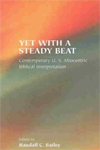 |
Bailey, Randall. Yet with a Steady Beat: U.S. Afro-centric Biblical Interpretation. Atlanta: Society for Biblical Literature, 2002.
|
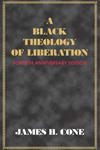 |
Cone, James H. A Black Theology of Liberation, 40th Anniversary. Maryknoll, NY: Orbis Books, 2010.
|
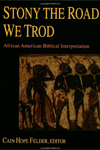 |
Felder, Cain Hope. Stony the Road We Trod: African American Biblical Interpretation. Minneapolis: Fortress Press, 1991.
|
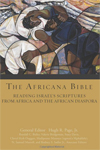 |
Page, Hugh, et al. The Africana Bible: Readings Israel’s Scriptures from Africa and the African Diaspora. Minneapolis: Fortress Press, 2009.
|
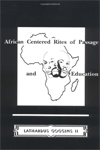 |
Goggins II, Lathardus. African Centered Rites of Passage and Education. Sauk Village, IL: African American Images, 1997. |
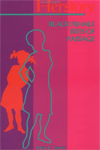 |
Lewis, Mary C. Herstory: Black Female Rites of Passage. Sauk Village, IL: African American Images, 1998. |
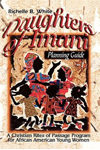 |
White, Richelle B. Daughters of Imani—Planning Guide: Christian Rites of Passage for African American Girls. Nashville, TN: Abingdon Press, 2005. |
 |
Maye, Marilyn. Orita: Rites of Passage for Youth of African Descent in America. Houston, TX: Faith Works, 2000. |
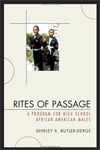 |
Butler-Derge, Shirley R. Rites of Passage: A Program for High School African American Males. Lanham, MD: University Press of America, 2009. |
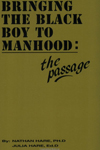 |
Hare, Nathan and Julia Hare. Bringing the Black Boy to Manhood: The Passage. San Francisco, CA: Black Think Tank Books, 1985. |
 |
Powell, Kevin and Hill Harper. The Black Male Handbook: A Blueprint for Life. New York, NY: Atria Books, 2008. |
X. Videos
XI. Links to Helpful Websites for Youth Day
- Urban Youth Workers Institute. Online location:
http://www.urbanministry.org/wiki/african-american-youth-resources accessed 8 December 2011.
- LBGT: Youth Sunday must involve a push against discrimination based on sexual preference. It must be understood and taught that all young people have the potential to exercise significant leadership. See the various posting on Rev. Irene Monroe’s website: http://www.irenemonroe.com/home/ accessed 8 December 2011.
-
Disability Awareness: In addressing issues related to youth, it is also important for churches to remain aware and vigilant in their sensitivity to those who are disabled/differently abled. Churches may want to use the following statement from the National Council of Churches as a model to use in constructing their own positive and affirming statement. It is as follows:
| |
“Indeed, the body does not consist of one member but of many” (1 Corinthians 12:14). One in five Americans lives with an impairment that significantly limits one or more major life activities. Virtually everyone will live with a disability at some time in life. Concepts of justice for people with disabilities have evolved beyond paternalism toward the ideals of full participation and inclusion in all aspects of life. Disability rights and self-advocacy movements have emerged. |
This statement is found online at: http://www.abilitychurch.org/2008/08/ncc-policy-statement-on-disability-body.html assessed 8 December 2011.
XII. Notes for Select Songs
A. Well-known Songs
- God Has Smiled on Me. By James Cleveland
Location:
Reedy, Jessica. From the Heart. Denver, CO: Intersound Records, 2011.
- Grandma’s Hands. By Bill Withers
Location:
Y’Anna. The Promise. Universal City, CA: Imago Dei Music Group, 2010.
- Young, Gifted, and Black. By Nine Simone
Location:
Nina Simone Anthology. New York, NY: RCA, 2003.
B. Modern Song(s) (Written between 2005–2011)
- Something Big. By Erica Akins, Tina Campbell, Jr., Berry Gordy, Force Mizell, Danny Ray Nixon, Frederick Perren, and Deke Richards
Location:
Mary Mary. Something Big. New York, NY: Columbia, 2011.
- God Has Smiled on Me. By Erica Akins and Tina Campbell
Location:
Soul Sax Tribute to Mary Mary. Dallas, TX: CC Entertainment, 2006.
C. Spiritual(s)
- Children, Go Where I Send Thee. African American Traditional. Arr. by Evelyn Simpson-Curenton
Location:
African American Heritage Hymnal. Chicago, IL: GIA Publications, 2001. #623
- Guide My Feet. African American Spiritual. Harm. by Dr. Wendell P. Whalum
Location:
Zion Still Sings for Every Generation. Nashville, TN: Abingdon Press, 2007. #141
- Members, Don’t Get Weary. Negro Spiritual
Online location: http://www.negrospirituals.com/
D. Hymns
- To God Be the Glory. By Fanny Crosby
Location:
African American Heritage Hymnal. #157
- Do All the Good You Can. By Fanny Crosby
Location:
African American Heritage Hymnal. #433
E. Liturgical Dance Music
- Keep Your Head to the Sky. By Kirk Franklin
Location:
Keep Your Head. Inglewood, CA: Gospocentric, 2005.
- Love. By Kirk Franklin
Location:
Franklin, Kirk and God’s Property. God’s Property from Kirk Franklin’s Nu Nation. New York, NY: Verity Records, 2010.
F. Song or Instrumental for the Period of Prayer
- Grace Amazing. By Stanley Porter
Location:
Grace Amazing: Stanley Porter. 4:12 Records, 2005.
- Smile. By Tasha Cobbs
Location:
Smile. Atlanta, GA: Tasha Cobb Music Group, 2010.
G. Sermonic Selection
- Everything Is Changed. By Youthful Praise
Location:
Youthful Praise and JJ Hairston. Exalted—Live in Baltimore. Nashville, TN:
Evidence Gospel, 2007.
- For the Good of Them. By Darius Brooks and Jazz Antiqua
Location:
Darius Brooks Presents: The Reunion—Live in Chicago. Chicago, IL: Journey Music Group, 2006.
- Release Your Power. By David Willersdorf
Location:
Hall, James. Won’t It Be Wonderful. Nashville, TN: Central South Distribution, 2009.
H. Invitational Song or Instrumental
- I Give Myself Away. By William McDowell and Sam Hinn
Location:
McDowell, William. As We Worship Live. New York, NY: E-I Entertainment, 2009.
- Keep Me, Every Day (Lord, I Want to Live for Thee). By F. L. Eiland. Tune, (EVERY DAY), by Emmett S. Dean
Location:
African American Heritage Hymnal. #433
Notes
1. Warfield-Coppock, Nsenga. “The Rites of Passage Movement: A Resurgence of African-Centered Practices for Socializing African American Youth.” The Journal of Negro Education, Vol. 61, No. 4 (Autumn 1992). pp. 472–474. Online location: http://www.jstor.org/stable/2295365 accessed 18 October 2011
2. Ibid., p. 474.
|